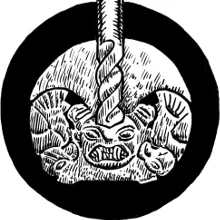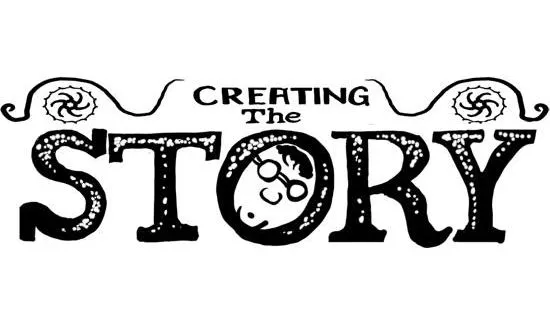



It has been a while since I wrote about how I make the comic about Phill from GCHQ. You can read the comic in its entirety (it's not finished but there are 35 pages) here:
https://phillfromgchq.co.uk
And the earlier instalments of this series can be read here:
For the readers that actually are going to read this... there is a small competition hidden in the text. 2 SBD is the prize!

Introduction

When I started making Phill from GCHQ it was solely meant as an experiment. I made three pages and then I abandoned it for another project, a dark fantasy comic of which you can see some concept art here: Concept art for dark fantasy cartoon. So as I continued these three pages it was only with a very vague sense of what was going to happen.
Normally you will advice people to have at least a finished draft of how things should unfold in the story, but there is actually great stories that aer written as serials, most famously the works of Charles Dickens. When reading one of his books in the original version you can feel that even the writer is interested in what is going to happen next. Another fine example, but maybe a bit nerdy is the very complex eighteen century novel by Laurence Sterne, The Life and Opinions of Tristram Shandy, Gentleman
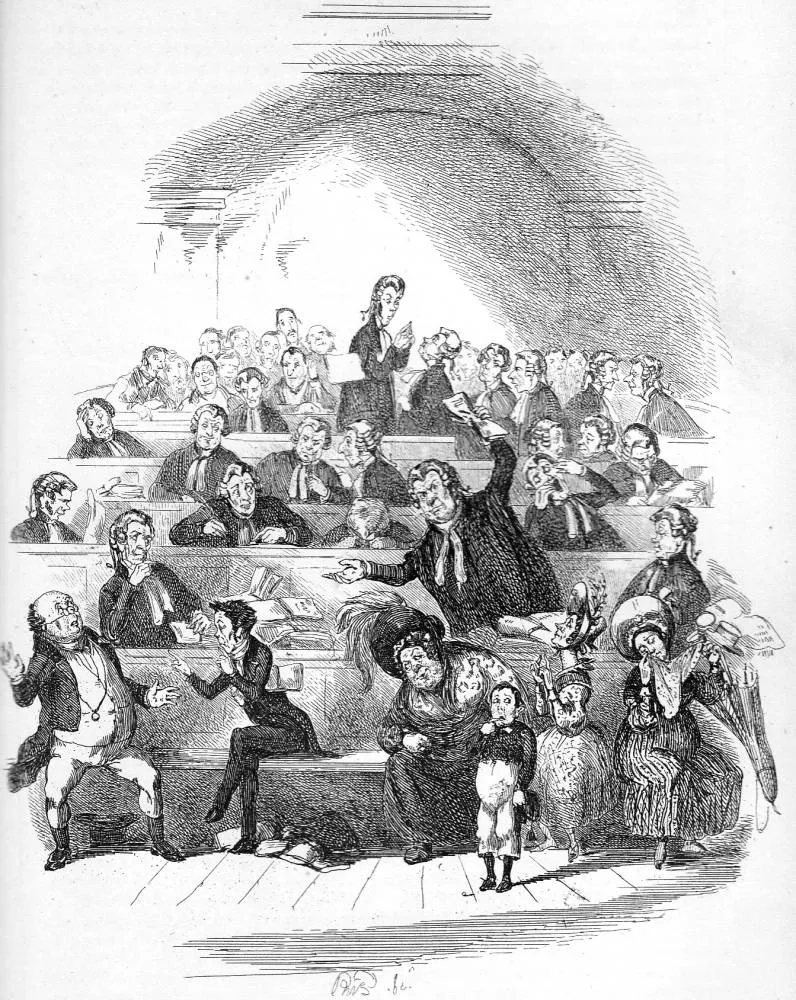
Into the unknown... armed with rules
There is something liberating about the approach, and the author benefits from not having to go about the tedious drill of illustrating something that is already finished in his or her head. Sadly I have also seen that it does risk being a little bit or sometimes a very large bit boring. The author already lives in the selfcreated universe, and sometimes forget that people will have to make an effort to get there too. And webcomics are extra vulnerable to this as they are made without much expenses, and often without an editor.
So early on I decided to follow some self-imposed rules. Readers of my blog (all five of them), will not be surprised - I live by self-imposed rules.
Rule no. 1: Always end the page with a cliffhanger
This trick is as old as comics themselves. If you go to your book-shelf and pick up any album from your complete collection of Tintin - you do have the complete collection.... right? - then you will see that almost every page ends in a cliffhanger. The principle is followed through with consequence - and often there is no real danger. The voice saying: "hands up or I will shoot" is only a parrot - the strange person knocking on the door in the night is just the annoying insurance salesman, Séraphin Lampion. But it still makes you turn the page, and it makes the cartoonist struggle a bit to come up with something exiting.
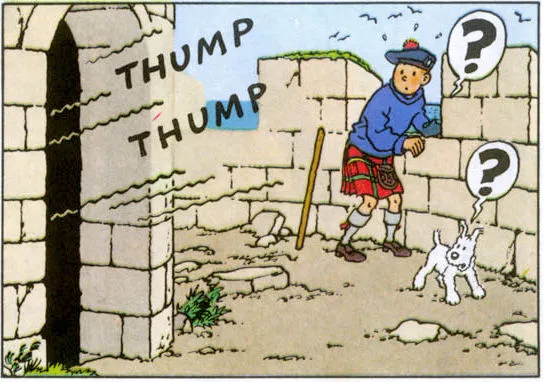
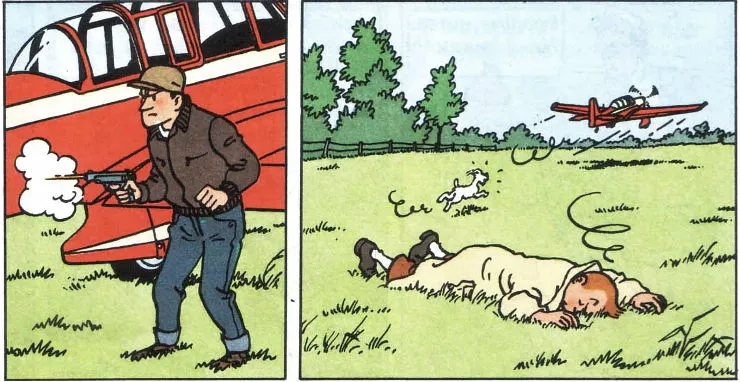
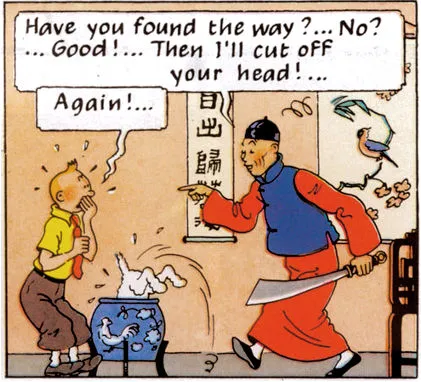
Below you can see the same simple trick used in Phill from GCHQ:
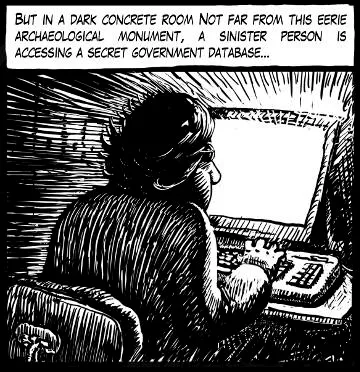
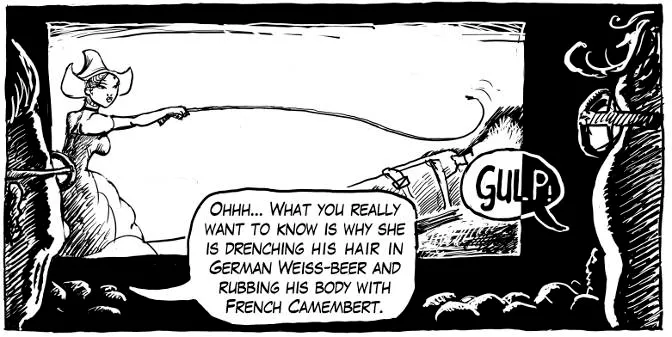
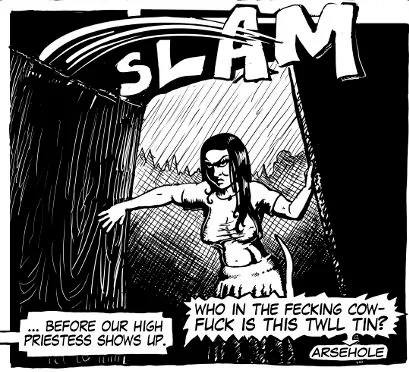
Rule no. 2: Always finish what you started
This second rule is closely related to the principle called Chekhov's gun. It states that if a thing is mentioned it should be used, and is formulated by the Russian author Anton Chekhov. The reason it is called a gun is that the maxim says: "If you put a gun in the first act, then you have to fire it in the second."
So I reuse both supporting characters and things that are mentioned as best I can. Below is one examples:
The heater was just a whim. I wanted the caretakes Eileen to be a bit harsh and commanding, and I also wanted her to be capable of repairing things and all in all be self-reliant, even on fields that are stereotypically male: like repairing machinery.
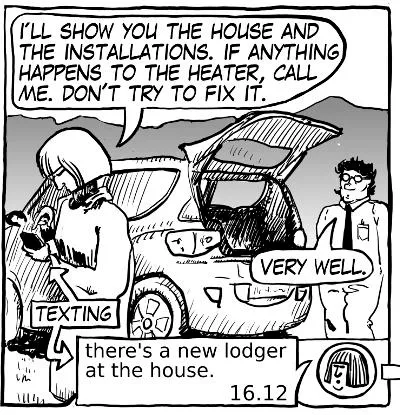
But I knew as soon as I wrote it that the heater (oil furnace) had to play a role somehow. Quite a few pages later I had the idea how to use it. Phill, the hero of the tale, phones Eileen from the woods to make her come to the house so he can get his mobile phone back (he hid it in her trunk to confuse potential enemies).
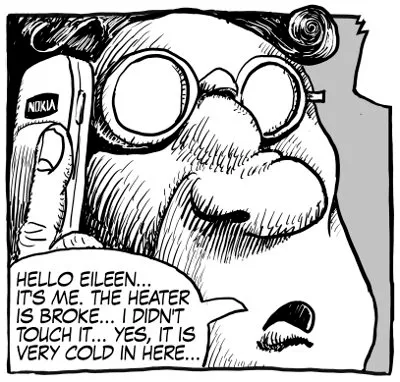
When she arrives she finds nothing wrong with the heater... but is instead busted in the CIA operation that was meant to catch Phill.
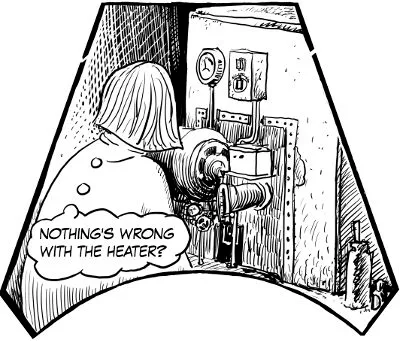
I also use this by paying close attention to my supporting characters - instead of inventing new ones it is much better to reuse an existing on. Not only does it give the reader fewer characters to remember and reusing already existing context, it also develops the character and they even might get much bigger roles than I had originally anticipated. As for Eileen, she already has transcended from a small role as supporting character that was supposed to tell some back story, to a much more prominent position. There is an image in the comic where you see Eileen as fifteen years younger than current, but her name is not mentioned - 2 SBD to the one that finds it first :)Write it in the comments below.
Rule no. 3: Move around
One of the oldest kinds of story is the travelling story. Gilgamesh, Herakles... anybody should be able to continue the list. Using the quest-model is simple and always entertaining. "Then he went there... and then he travelled there... and at last he returned home" Or as J.R.R. Tolkien put it:
The Road goes ever on and on
Down from the door where it began.
Now far ahead the Road has gone,
And I must follow, if I can,
Pursuing it with eager feet,
Until it joins some larger way
Where many paths and errands meet.
And whither then? I cannot say.
Bilbo Baggins leaving the Shire in the Lord of the rings by J.R.R. Tolkien
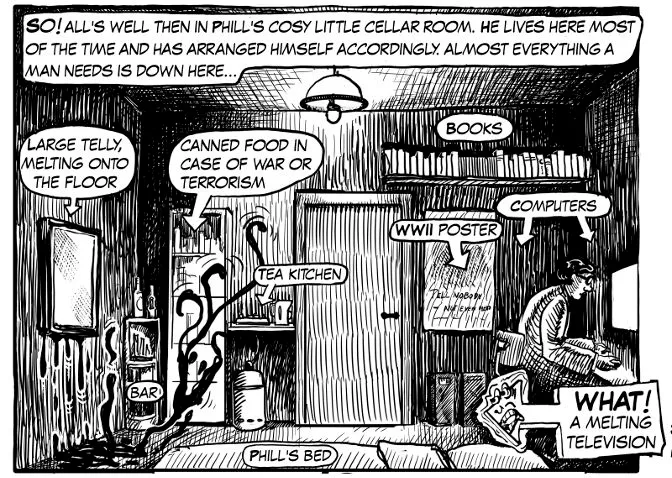
So I have tried to move my hero - from the comfortable, but also lonely life in his cellars (Phill prefers cellars both at home and at the job) to the safe-house in Wales, then the small roundhouse up in the hills where the heathen priestess Gwendolyn and her motley crew of followers live... and now it seems they have to go on a roadtrip to escape CIA, MI6 and other dangerous entities. Contrary to movies where an outside shot i a pain and scenes taking place in other countries are expensive. The comic on the other hand can take place wherever the author likes without any problems - so using this simple principles is an easy way to entertain your audience.
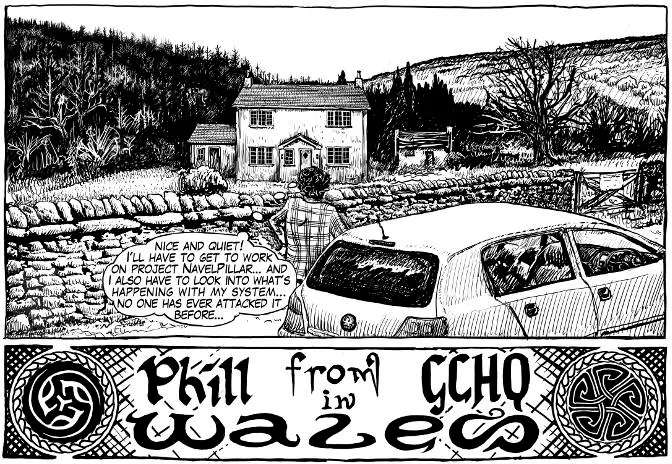
Conclusion... or wait...
Well, is that all? I am not sure? I feel that I have more to say on the topic, but right now it eludes me completely. The post is also far too big to be convenient, but I hope that somebody out there can use it for something. I will try to make some more posts about how I go about creating comics very soon.


